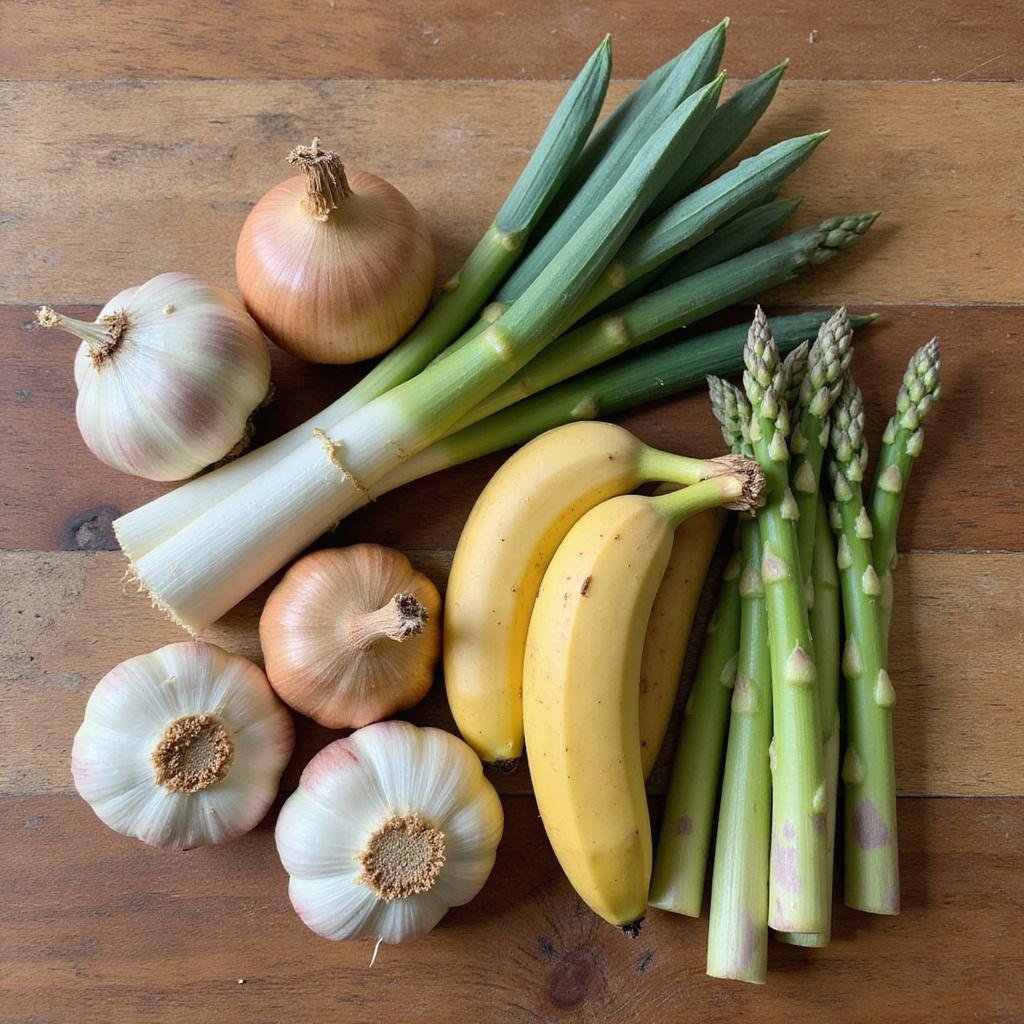1. Introduction
In recent years, maintaining a healthy gut microbiome has become a cornerstone of overall wellness, leading to a surge in popularity of prebiotic foods for gut health. These essential dietary components play a vital role in promoting digestive efficiency, boosting immunity, and enhancing your overall vitality. If you’re eager to incorporate the best prebiotic foods into your nutritional routine, it’s important to understand what makes them essential, how to prepare them, and how they contribute to better health. This comprehensive guide delves into the best kw options, explores their synonyms like kw1 and last kw, and offers practical tips on cooking these nutritious ingredients to maximize their health benefits, especially through smart kitchen tools such as the Crock-Pot 7 Quart Oval Manual Slow Cooker.
2. What Are Prebiotic Foods?
Prebiotic foods are types of dietary fiber that serve as nourishment for the beneficial bacteria already present in your gut. Consuming these gut-healing foods helps maintain a balanced microbiome, which is crucial for optimal digestion, nutrient absorption, and immune function. Unlike probiotics, which are live bacteria, prebiotics act as fertilizer for the good bacteria inside your digestive system. To take full advantage, incorporating the best kw, including their kw1 and last kw variants, can diversify your diet with a variety of fiber-rich foods, each offering unique health benefits. Kitchen gadgets like the Ninja Mega Kitchen System can help prepare these foods efficiently, ensuring you maximize their prebiotic potential.
3. Top 10 Prebiotic Foods and How to Cook Them
Here’s an extensive list of the best kw prebiotic foods, along with effective cooking methods to preserve their rich nutrient profile and prebiotic properties:
- Garlic – Use fresh garlic in sautés, dressings, or roasted for a flavorful boost. A quality Cuisinart Bread Maker can help incorporate garlic into homemade bread recipes for added health benefits.
- Onions – Incorporate raw or cooked onions into salads, soups, or caramelized as a side dish. For quick and healthy cooking, a versatile KitchenAid Stand Mixer can assist in chopping onions with ease.
- Leeks – Add sliced leeks to stews or braise them with herbs. Using tools like the Fullstar Vegetable Chopper makes preparing delicate leeks simple and efficient.
- Asparagus – Roast, grill, or steam asparagus to enjoy its tender texture and prebiotic benefits. For quick-prep, an Ninja Air Fryer offers healthy roasting options.
- Bananas (especially unripe) – Incorporate into smoothies, oatmeal, or eat as a snack for a prebiotic effect. Using a high-speed Ninja Mega Kitchen System simplifies blending these fruits into nutritious treats.
- Chicory root – Use chicory in salads or as a coffee substitute, providing a bitter, prebiotic-rich flavor. A quality Stand Mixer can help prepare chicory into powder or incorporate into baked goods.
- Jerusalem artichokes – Roast or boil these tubers for hearty, fiber-rich side dishes. A reliable Outdoor Grill like the Ninja OG951 can add a smoky flavor to Jerusalem artichokes.
- Barley – Prepare in soups or as a grain side dish to boost fiber and prebiotic intake. The KitchenAid Stand Mixer can facilitate kneading and preparing hearty barley recipes.
- Oats – Use rolled oats in breakfast bowls or baking to support gut health. Pair with a CAROTE Nonstick Cookware Set for quick, mess-free cooking. Apples – Eat raw, add to salads, or bake apples for dessert, keeping their prebiotic qualities intact. A Nonstick Pots and Pans makes preparing apple dishes effortless.

4. How to Cook Prebiotic Foods for Maximum Benefits
Cooking prebiotic foods properly is essential to preserving their fiber content and health-promoting compounds. Here are valuable cooking tips:
- Gentle Cooking: Techniques such as steaming, roasting, or sautéing help retain prebiotic fibers and flavors. Using a Crock-Pot Slow Cooker allows slow, gentle cooking that preserves nutrients.
- Avoid Overcooking: Overcooking can break down prebiotic fibers, so aim for al dente textures or lightly cooked foods to maximize benefits.
- Use Minimal Water: When boiling vegetables like leeks or asparagus, minimal water prevents nutrient leaching. A Ninja Air Fryer offers a healthy alternative for crispy, prebiotic-rich dishes.
- Combine Raw and Cooked: Add raw garlic or onions in salads along with cooked versions to enjoy maximum prebiotic effects without overcooking.
5. Incorporating Prebiotic Foods Into Your Daily Diet
Making prebiotic-rich foods a part of your everyday meals can significantly enhance your digestive health. Practical suggestions include:
- Starting your day with oatmeal topped with sliced bananas and apples.
- Add raw garlic or onions to salads, roasting vegetables with a drizzle of olive oil.
- Preparing wholesome vegetable stews with leeks, asparagus, and Jerusalem artichokes.
- Substituting refined grains with hearty options like barley or oats in your recipes.
6. Frequently Asked Questions (FAQs)
What are the best kw prebiotic foods for gut health?
The best kw prebiotic foods include garlic, onions, leeks, asparagus, and chicory root. These foods are abundant in dietary fiber that nourishes the beneficial bacteria within your gut microbiome, leading to improved digestion and immune support.
How can I cook prebiotic foods to maximize their health benefits?
Using methods like steaming, roasting, or sautéing helps retain fiber content and prebiotic compounds. For example, a Crock-Pot slow cooker is ideal for gently cooking ingredients, ensuring you preserve their prebiotic benefits. Combining raw vegetables like garlic and onions into salads or finishing dishes with raw ingredients enhances their prebiotic impact.
Are prebiotic foods suitable for everyone?
While most individuals can enjoy prebiotic foods, those with digestive sensitivities such as FODMAP intolerance should consult healthcare providers before significantly increasing intake to avoid discomfort. Start with small portions and observe your body’s response.
7. Conclusion
Adding the best kw prebiotic foods into your diet is a simple yet highly effective approach to improving your gut health and supporting overall wellness. Proper preparation and cooking techniques, such as steaming or roasting with the aid of useful kitchen tools like the Crock-Pot or the Mega Kitchen System, ensure you maximize their health benefits. Whether you prefer raw, roasted, or steamed preparations, emphasizing ingredients like garlic, onions, and asparagus can positively influence your digestive health journey and overall vitality.


2 thoughts on “The Best Prebiotic Foods with How to Cook Them”